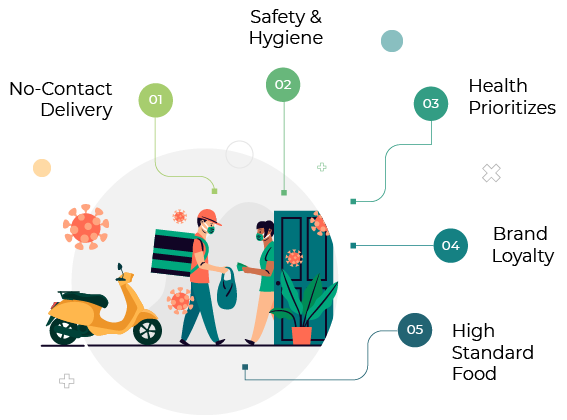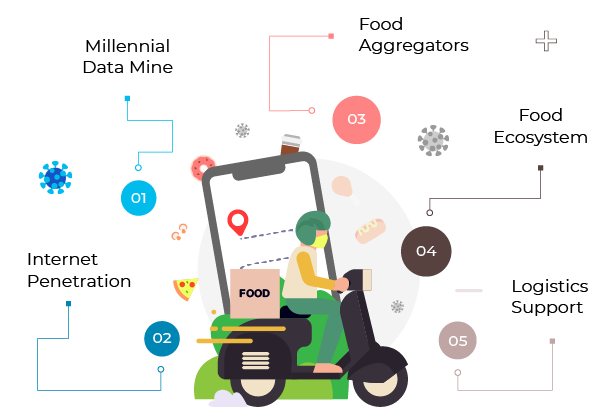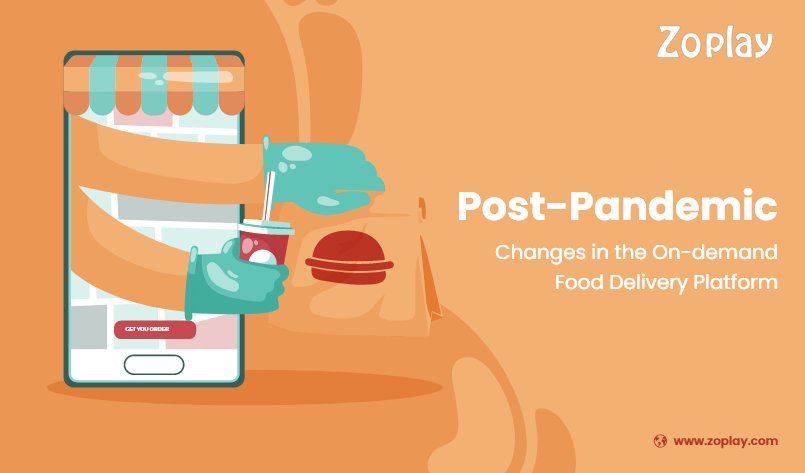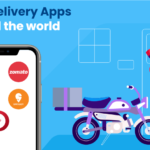Post-Pandemic Changes in the On-demand Food Delivery Platform
Covid-19 has wreaked havoc across sectors, leaving industries gasping for breath. Food delivery platforms also have borne the brunt of the impact. When the restaurants closed down, these platforms too felt the pinch. But, what future holds for these delivery platforms is a great promise. Here are some challenges and prospects they are likely to meet:
1. No Contact Delivery
Food delivery companies came as a catalyst for the restaurant business. On the one hand, they brought newer clientele, while on the other, they made customers’ lives easy. However, the Covid-19 pandemic changed everything.
In these times of the new normal, delivery businesses also have been adapting to changes. And, a part of that adaptation is no-contact delivery.

It is an option a patron can tap to get the food they want without risking the transmission of viruses. That is how it works:
- While making an order, a customer chooses the no-contact delivery option
- The delivery agent reaches the address and informs the customer
- The agent delivers the order as per the customer instructions
- The agent moves to a safe distance and waits for the customer to take the delivery
- There are plenty of benefits if delivery platforms add this option to their menu.
First, the platform assures the customer that it prioritizes their health.
Second, this free service also acts as a protective shield for their agents.
Thirdly, this free-service builds trust between the company and the customers.
It is one way to ensure customers’ brand loyalty at a time when their attention keeps wavering.
No-contact delivery is here to stay, and how the platforms use it to their benefit will be interesting. Those publicizing and detailing their no-contact delivery option will turn into early birds. After seeing this huge importance, we have integrated No contact delivery module into our UberEats Clone.
Tapping no-contact delivery as a tool to ensure social distancing is a viable option. It would ensure that customers do not come into contact with the delivery agents. Also, advisories on the safe disposal of packaging on the website will be the icing on the cake. A little personal touch never did any harm to anybody.
2. Challenges Faced by Food Delivery Companies
Now, it is not going to be a walk in the park. Covid-19 has disrupted the economy, and food delivery platforms also are not cozy. Some major challenges they will have to face are:
The Entry of Big Names
With big players ready to milk the cash cow that the food delivery market is, competition is rising. These big names have deep pockets and are flush with cash.
Big players chip away a significant share of customers from the small players. These biggies function even while incurring a loss, as the scale of operations in their favor. Moreover, small players cannot match the mouth-watering deals with the bigwig’s offer.
Fluctuating Brand Loyalty
We live in interesting times. Now, you can avail of all you want with just a tap. But, there are pitfalls if you are not careful. With customers spoiled for choice, food delivery firms have to be on their guard.
One misplaced or late order can be the difference between retaining and losing a client. Nowadays, customers compare a lot online before ordering. Hence, companies should offer the best at the least cost per order. It can have a significant effect on small businesses in a market rife with big players.
High Standard
Customers are getting choosier. And, one cannot blame them for that. However, there is also a section that is also demanding in terms of quality and hygiene. It adds to the burden of an aggregator. If a delivery platform takes on board low-rated restaurants, traction is bound to be weak.
Remember, customers, are always on the lookout for cheaper and better alternatives. Here again, the odds are against the small players, for the biggies can pay better to get better. Delivery platforms have to find the best restaurants with a good track record to get a grip on the market.
3. Role of Hygiene and Food Safety in Food delivery
Ensuring hygiene and safety in food delivery is paramount. While a restaurant has to provide an online menu with a list of allergens, the delivery has to be hygienic. These platforms have to ensure that they use the best packaging materials while delivering. It is a vital step in ensuring that contamination does not occur.
Unsafe delivery practices may result in cross-contamination. The best way out is to keep allergen-free food sealed under hygienic conditions. If the food order entails hot items, then insulated boxes are a must. Now, if the order is for a cold or frozen item, iceboxes or coolant gels are a must.
Failing to adhere to safety guideline make food items susceptible to contamination. Apart from the legal issues surrounding the act, this may also bring a firm to disrepute.
Another important issue for demanding attention is the packaging. The partners must keep vegan, allergen-free, nonvegetarian, and vegetarian foods segregated. Properly marking the packages would ensure there is no chance of a mix-up. The agents should ensure proper cleaning of vehicles and containers between deliveries. The delivery platforms must have a plan to avoid critical contamination.
Simple practices like advising agents to wash hands go a long way in eliminating risks. Restaurants must set protocols to ensure food gets packaged in hygienic conditions. The clinical cooking process and military precision while delivering can ensure zero cross-contamination.
When the Covid-19 crisis became a full-blown pandemic, restaurant food became a casualty. The reason was simple: Fear of contamination due to suspect hygiene. When delivery platforms team up with restaurants, they must give hygiene the priority. Customers have lots to choose from, and ensuring they return to your platform is a challenge. Special offers and an emphasis on hygiene would go a long way in addressing the challenge.
4. Future of Online Food Delivery
The difference between Aggregators and the New Delivery system is in the process. Aggregators collect orders and route them to partners, who deliver the package. However, the new delivery system offers much-needed logistics support to restaurants.
Experts say newer methods would make it to the repertoire of the new delivery services. Already businesses allow smartwatch, Twitter, and other social media orders. Channels like parachutes and drones are being added to the arsenal even as we speak. Some firms allow in-car purchases. Through this, a traveler can order from any joint on the way and get it delivered to their vehicle.
With the internet penetration set to rise in the future, companies can bank on rosy days ahead. But, every entrant must be abreast of the changes in the market and adapt accordingly. Resting on past laurels is not going to help, as upstarts will challenge the status quo.
Quantum of orders is on the rise every day. Those who don’t equip themselves cannot handle the spike and would face extinction. Disruptions in the order and payment processes can be a deal-breaker for businesses. Investing in technology, like implementing robust order and payment systems, would ensure uninterrupted flow and add to the business’s resilience. For companies dealing with complex ownership structures, such as those involved in capital timeshare, technological investments become even more critical in managing intricate transactions and ensuring customer satisfaction.
More businesses are likely to join hands with delivery firms to expand their client base. In this scenario, the firm offering good technological support would ace the race. Are you looking to launch a food delivery platform with top-notch technical support? Drop your details here.
5. Millennial Data Mine

Today, it’s the millennials who are the driving force behind the food ecosystem. Online food aggregators have their task cut out catering to them. Technological progress has made the millennial population a pampered lot. They can get anything from anywhere at any time they choose. While this opens up many avenues for businesses, it brings along a set of challenges as well.
- The millennial accustomed to quick delivery would not take kindly to delays. They may make a sudden switch.
- The millennials are prone to the quick airing of grievances. If one fails to meet the level of their expectations, get ready for quick biting reviews.
- The lure of special offers and deals is too much to resist for them. The better your offers, the longer they stay with you.
The biggest reward for the aggregators is not the money, but data. The apps and the websites used by the millennials collect user data regularly. This data is then analyzed to give the customer personalized service. Most of the time, they share these data with third parties.
You can launch an online food ordering platform like Grubhub/Deliveroo/UberEats in two days. Contact us to know more.









